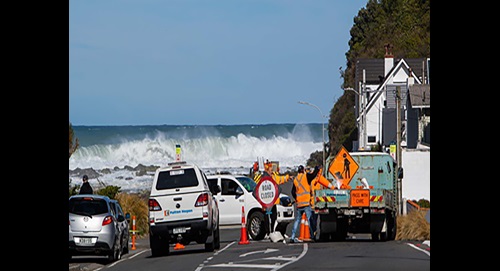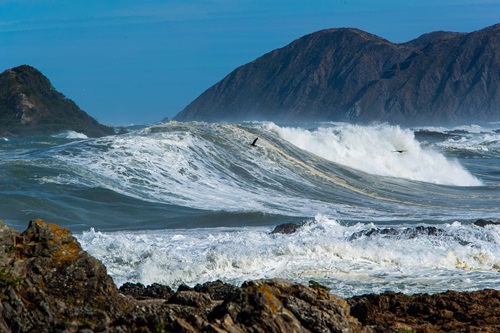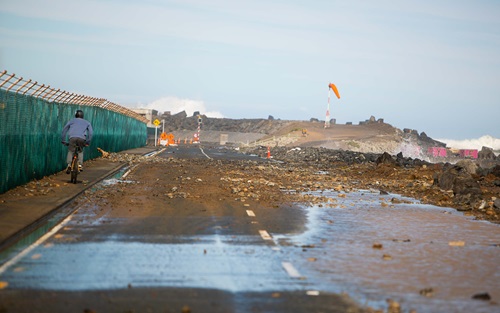The waves closed roads, damaged garages, forced people out of their homes, and a person even had to be rescued after being swept into the sea.
Wellington City Council roading crews and contractors now have a big job of cleaning up the large amount of rocks and debris scattered across roads.
People are being warned not to go and have a look.
MetService meteorologist William Nepe says waves reaching 5-6m was a relatively common occurrence.
“We see waves this big all the time, and occasionally you see even bigger ones that don’t have such an impact on the coast. The issue with these waves is the period.”

William says the average wave period – the time between wave peaks – is normally 8-10 seconds. However, the period of today’s waves was about 15 seconds.
“A 15-second period is quite remarkable – there’s a lot of energy in these waves.”
Wellington City Council contractors worked to close off most of the road between Breaker Bay and Owhiro Bay, before high tide at 11.10am.
Occupants of five houses in the Owhiro Bay and Happy Valley area were evacuated by police, as sea water washed over the road and into their properties. WCC is working with the police to help arrange transport and temporary accommodation for these families.
NIWA forecaster Ben Noll says the waves pounding the coastline were being caused by a deep area of low pressure passing the Chatham Islands. The low was responsible for generating strong winds and large waves between the Chathams and mainland New Zealand.
“For Wellington, the highest waves are expected to last into the mid-afternoon before easing this evening,” he says.

So far today, NIWA’s monitoring buoy at Baring Head has recorded a maximum wave height of 5.5m. Waves in the open ocean to the east of New Zealand are modelled to be over 12m in some areas.
“When large waves break, there is an increase in wave set-up. The water level becomes elevated, allowing waves to come further inland. This is in addition to having slightly elevated tides on the back of King Tides a few days ago,” Ben says.
When combined with a deep low pressure system and strong winds, this increases the risk for coastal erosion and flooding along exposed coastlines.
Motorists and pedestrians are asked to avoid the south coast and to stay safe at home in their bubble.
